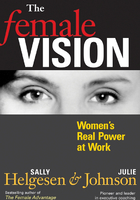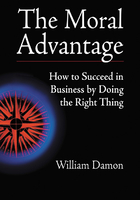Preface
HEY! YOU. Yes, you, right there. Did you know that posting what you had for breakfast, offering advice about parenting, and posting links to news stories you find interesting all have the potential to radically change the world
No
Then this book is for you.
Social networking is all the rage, and it's coming at us, a million miles an hour. We're surrounded by a flurry of new technology, and just when we begin to make sense of one tool, a new one arrives on the scene. (At the time of this writing, we are predominantly using what you out there in The Future may remember as Facebook, Twitter, LinkedIn, and MySpace.)
All this activity leaves us little time to contemplate any forest for all these trees, let alone think about the bigger picture of how this technology will change the future. But here's the secret How we share information, find community, and both connect and disconnect will give us unprecedented influence over our place in the world. Social media technology holds some of the biggest potential for creating tectonic shifts in how we operate, and the overall open-ended promise of technology gives us a great shot at creating the systems for change. Technology isn't a magic bullet for solving the world's problems, but it's certainly a spark to the fastest fuse to explode our notions of power that the world has seen in a thousand years. In this book, I hope to show you how to light that fuse.
It hasn't been easy to thrive in our culture for the last hundred years or so. We've become ever more obsessed with consumption and power. Our corporate mass media and politicians have been treating us as faceless members of large demographics with open wallets, and less as individuals within communities, leading us down dark paths of apathy and isolation. We've had little room for recourse and little chance to connect to one another.
All of that's changing, and rapidly. People are using social technologies to find and connect. A study from the Pew Internet & American Life Project in November 2009 showed that people who have Internet access andor a mobile phone were much more likely to have bigger, more diverse discussion networks, for example.[1] As I argue in this book, when we connect and share our lives with one another, both in the digital space and in the physical space, we create bonds of trust and empathy that lead us away from that apathy that's glazed over our eyeballs for at least a century. Our lives matter What we believe and which truths we hold to be self-evident matter.
Along the way, I stress that technology is a tool, a means—never the end. It's important to remember that these tools are never completely neutral (because of the biases tech innovators can bring to the table), and that, to achieve its full potential, sharing in social networks requires complementary forms of organizing, activism, electoral work, and policy advocacy.
Your presence is required in this work We need you in the online social space. Desperately. We have a tremendous opportunity to bring in voices previously marginalized or dismissed when it comes to shaping public conversations. But change won't happen on its own—it requires you to show up, and to participate.
If you choose to sit this one out, though, your void causes a ripple effect. First, your own reputation, something that's increasingly important as recommendation and referral become cornerstones of how we operate, will suffer because you're not there building and managing it. Then, because you're not contributing to the larger, very public conversations about what's happening in the world and how problems should be solved, others will define and direct the conversation without the benefit of your experiences and knowledge. Y'know, like what's been going on for the last few thousand years.
Here's the thing I truly believe that through social networking, we can influence the way these conversations affect how change happens. As more conversations are taking place in public, we can represent ourselves. We can break stereotypes. We can transform our new connections into social change.
I hereby offer you an ambassadorship to a more democratic future. Do you choose to accept this mission
Who This Book Is For
Let's start out with some basic assumptions about who you are and why social media matters to you. Then, if you're reading this in the bookstore and wondering whether it is really the book for you, you'll know. (And likely, you'll buy it. Won't you It's so nice and slim and trim, so easy to carry around or take on vacation with you. It's practically bought itself.)
People have wildly varied experiences and all kinds of questions about technology, and I'm going to make a few assumptions right at the outset. I'm going to assume, for the purpose of this introduction, that many of you are comfortable with computers and the Internet in general. You have an e-mail account or two. You've shopped online, and you've got Google nailed. You've heard of social networks, "Web 2.0," and social media, and might belong to a few services. If you do, you use them, but you're not obsessive (like some people). You might have a friend or daughter (hi, Mom!) writing a book about the power of social media to induce systemic cultural and political change, but that's a little less likely. Hey, who knows You're reading this book to figure out What It All Means.[2]
Which brings me to my other crew There's a group of you out there who are interested in social change and activism. You've been bonked over the head with the idea that social technology can help you to achieve your goals. You've read some articles about how to do fund-raising online or have heard that organizations are having success getting new people interested in their work through social media. In short, you're trying to make sense of this intersection of social justice and technology before it slips through your fingers and evolves into something else, and you don't feel like you've had the chance to grasp what's happening in the first place.
Why I Wrote This Book
Many forces—technological, social, economic, and political—have converged to a place where we can all dive in and make change happen. I decided to write this book to explain the shift that's under way and to show you how you're going to change the world. You, li'l ol' you right there.
I'm a social media strategist who provides planning, workshops, and training on social networking for organizations and people looking to change the world. I came into the world a geek—in 1982, when I was seven, instead of buying a video game console, my parents brought home a personal computer for my brother and me to mess around with. In my late teens, I became politically conscious and realized that the world's problems weren't going to fix themselves. My inner activist kicked in. When the Internet invaded my life in 1994, I saw the huge potential ahead of us—and the huge amount of work.
By 2003, I'd quit my nine-to-five job in order to commit myself to technology and activism. I've worked with progressive media and advocacy organizations, helping them to get beyond preaching to audiences and instead to explore ways to connect to their communities. AlterNet.org, Jim Hightower's Hightower Lowdown, GRITtv with Laura Flanders, Feministing.com, the Women's Media Center, and the Media Consortium are among the many I've had the pleasure of working with. They've taught me that, while it's fun for tech folk like me to bat around ideas, there's still a lot of work to be done in developing technologies that enhance our work in social change, and a lot of work in connecting people to the right technologies to fit their missions. One size does not fit all, and there is no easy answer.
My approach to social media has been heavily influenced by my participation in and organizing of social justice and change projects without formal organizations running them. The Hurricane Information Center, started in 2008 by NPR's Andy Carvin, for example, was a collection of tools gathered and utilized by hundreds of volunteers helping hurricane victims prepare for, evacuate, and recover from devastating storms. Later that year, I also worked on the Twitter Vote Report project, in which a number of volunteers used Twitter, texting, mapping, and other technologies to enable voters to report problems at their polling places. Previously, my experiences in offline, ad-hoc organizing, particularly the arts-related projects my cohorts and I developed during the Republican National Convention in 2004, gave me a strategic education that could be applied to online projects. These experiences made it clear to me that the freely available nature of the tools reduces some of the complexity of organizing. We no longer have to rely on the old ways of top-down, or even organization-based, grassroots organizing.
As a woman all too familiar with the "pale, male, and stale" phenomenon,[3] I also understand that diversity is key to bringing about tremendous social change using social technology. And I believe it's critical to acknowledge the privilege one brings to the table The social system we live in automatically gives people benefits based on the color of their skin, the money they have, their gender, their sexuality, their access to technology, and more. I recognize that my privilege influences the work I do, and if I lose sight of that fact, I expect to be reminded and held responsible.
What This Book Isn't
To be clear about what we're going to get done, I should tell you right off the bat that this isn't the End-All-Be-All Activist's Guide to Fixing Everything with Social Networking. (That's why we didn't call it that, for starters.) There are plenty of books and websites that will tell you how to raise money, how to get people to sign petitions, how to get people to call their senators, all with social networking. We'll go over some thoughtful tactics toward the end of the book, but the thrust is going to be on the individual's role in transforming our culture and thus our world to be more livable for everyone. We won't get into the nitty-gritty of each tool that's out there, and we won't be dissecting case study after case study. We also won't be addressing the future of traditional media in this book. While we touch on the role that traditional media plays in advancing social change through telling stories, we won't be able to tackle the hard topics of what the future of journalism holds. I'll be concentrating mostly on web-based technologies, only discussing others—mobileSMS, e-mail, and so on—where overlap occurs. There are simply too many technologies, all changing almost daily, to cover in a static book. And even though I focus on the power of social technologies, don't forget That's all relative to what else is happening in the world, and we still need loads of other kinds of organizing and activism to complement what we share.
What's Ahead
This book is designed to walk you through the ins and outs—the opportunities and potential pitfalls—of the social networking landscape, viewed through the lens of social change. I've also created the illustrations and graphics to help you visualize new concepts. In chapter 1, "The Power of Sharing," we'll discuss how the tools help us to transcend the traditional ways of communicating that too often restrict our ability to effect change. But as much as many of us would like to believe the Internet is a promised land of meritocracy, it isn't. Chapter 2, "Are We There Yet" shows how we reproduce social structures online that marginalize voices and prevent meaningful advancement.
In chapter 3, "We Are What You Share," we'll learn that there's more to social networks than just posting minutiae Through sharing with others, we ultimately build the trust and empathy that are the building blocks of any movement for change. Your participation is critical. Chapter 4, "Trust Everyone," argues that we can subvert traditional power structures through choosing who is important, relevant, and interesting—and we do this by deciding to whom we assign authority. But we need to guard against the temptation to let shiny new things get the best (or worst, as it were) of us.
Discomfort, fears, and hesitations sometimes keep us out of conversations we need to be joining; chapter 5, "Sharing Is Daring," shows us how to overcome them. And in the Conclusion, we'll get a glimpse of where we're headed at this juncture of social change and technology.
Finally, the "Resources" section offers a collection of tips and tools designed to help you be your own best advocate for making change though social media. "Yeah, But . . ." provides responses to the most common objections to social media; it's the ammunition you need to build your confidence and win that argument around the water cooler. In "Tips for Individuals," you'll find hands-on advice, from getting started to more advanced and nuanced guidance; "Tactics for Organizations" offers fundamentals that organizations need to keep in mind, as well as essential pieces for the tool kit. And in "Crowdfunding Share This!" I've included the tale of how this book got funded, as a case study in the power of social capital and community building.
And We're Off!
When I wrote in these pages that we're going to "change the world," I expressed my fundamental conviction that change starts with each one of us—the "Be the change you wish to see in the world" ethos from Gandhi. When we're connecting, sharing, and changing the understanding of the people around us, we are at the beginning of making the world a better place. Activism always starts with stories, and we each have a unique contribution to make to the Grand Permanent Record of Things. From there, sharing can lead to advocacy success, electoral wins, and policy changes. We'll talk about some strategies and tactics for that kind of change, but before we get there, we have to commit personally to uprooting our notions of how things work and to reaching out to those around us. The commitment to sharing our experiences with one another supports and strengthens our bonds, and we are our own best hope for changing the world.
I promise We're about to have a really good time.
注释:
[1]Pew Research Center, "Social Isolation and New Technology," Pew Research Center Publications, httppewresearch.orgpubs1398internet-mobile-phones-impact-american-social-networks.
[2]image The number 42 is the answer to the meaning of life, according to author Douglas Adams.
[3]image "Pale, male, and stale" refers to the exclusion of women, people of color, and others from conversations about change, and thus the same ideas get repeated over and over. More on this in chapter 2.















